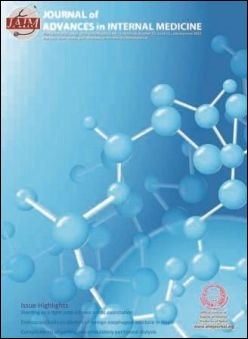Coronary dominance and predictors of adverse events during coronary interventional procedures: an observational study
DOI:
https://doi.org/10.3126/jaim.v6i1.18311Keywords:
coronary dominance, adverse events, coronary interventionsAbstract
Background: Coronary dominance is associated with adverse peri-procedural events during coronary interventions. There are limited data regarding events during coronary angiography in Nepal.
Aims and methods: The aim of this article is to get information regarding events during invasive procedures of this region which has a large feeder population. All the cases undergone cardiac interventional procedures were included and analyzed.
Results: Out of 200 cardiac interventional procedures, 160 cases underwent coronary angiography (CAG) and 20 percutaneous coronary intervention (PCI). 54% of the study populations were male. The mean age of study population was 61.2 years (range: 29-85 years). Most common indication for performing CAG was for post ACS (69%) followed by chronic stable angina (CSA) (16%). Most common finding in CAG was SVD (35%) LAD was the commonest (55% of SVD), DVD (19%), non-critical CAD (13%), TVD (14%) and left main (2%). Myocardial bridging was seen in 2% and 15% had normal coronaries. Commonest risk factor for CAD was Hypertension (45%) followed by smoking (35%) and diabetes (16%). CAG was most commonly performed from right radial (70%) followed by right femoral (24%), left radial (5%) and left femoral (1%). 78% of patients had right dominance, 16% had left dominance while 6% had co-dominance. Out of 40 non-right dominant (left or co-dominant) patient twenty three (57.5%) were female. There was no significant association of left dominance with the gender although the odds ratio was high (1.8) in female gender (P=0.12). Considering Left dominant patients only, the odds ratio of Tiger catheter versus Judkins Right (JR) is 8.33 but not statistically significant (P=0.17). Major complications encountered were ventricular tachycardia (VT) in 4 cases. The odds for VT with left dominance and right dominance was high with statistical significance [OR: 53.48, C.I :( 2.79-1023.4); P=0.002].
Conclusion: Ventricular tachycardia which is among the major complication is found to be significantly associated with left dominance. Further studies are necessary to evaluate the evidence provided by this study.
Downloads
Downloads
Published
How to Cite
Issue
Section
License
This license enables reusers to distribute, remix, adapt, and build upon the material in any medium or format, so long as attribution is given to the creator.




